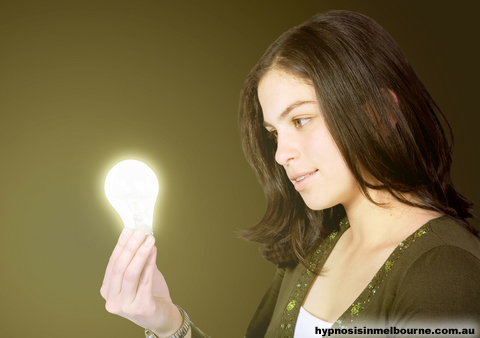Use Hypnosis to Research Creativity and Imagination
Creativity is defined as the ability to transcend traditional ideas, rules, patterns, relationships, or the like, and to create meaningful new ideas, forms, methods, interpretations, etc. Creativity is easy to define, but researchers often question how it can be measured and how people have different aptitudes for creativity. Hypnosis aides in the research of creativity, and it also allows psychologists to study the relationship between creativity and hypnotizability.
It is thought that hypnosis aides in the research of creativity. The state of hypnosis creates an altered state of consciousness; this makes hypnosis a good tool to use in the research of creative states and fantasy proneness. It is thought that hypnosis may lead to a breakthrough in understanding the origin of creative inspiration.
Bowers and van der Meulen (1970) performed a study involving 30 highly suggestible people and 30 participants who were not as suggestible. The study involved many tests of creative functioning including creative tasks, inkblots, and association tests. The results of the study showed that those who were more highly hypnotizable performed better in the creative tests. The study also concluded that women were more creative than men.
Another study was conducted to study the relationship between hypnosis and creativity. Hypnosis was used to measure the degree of effortless response to tasks involving creativity. The study consisted of students and writers who were asked to write while in a hypnotic state. The researcher also looked at the various creative styles of the participants. The results showed that more creativity was at its highest when there was no interference between associations and problem solving (Bowers, 1979).
Lynn and Rhue (1988) screened 6,000 students to find 780 participants in their study. They were divided into three groups based on their fantasy proneness. They were then compared based on measures of hypnotizability, imagination, waking suggestibility, hallucinatory ability, creativity, psychopathology, and childhood experiences. The researchers found that there was less of a link between fantasy proneness and hypnotizability than originally thought. This means that even those who are not creative are likely to respond positively to hypnosis. It was also found that those who were more prone to fantasy and creativity were not necessarily highly suggestible under hypnosis.
Although these studies differ in making a connection between suggestibility and creativity, all of the studies have made interesting conclusions involving creativity and hypnosis. The state of hypnosis allows researchers to study creativity in a non-invasive and natural way. More research should be conducted to learn more about creativity and imagination.


